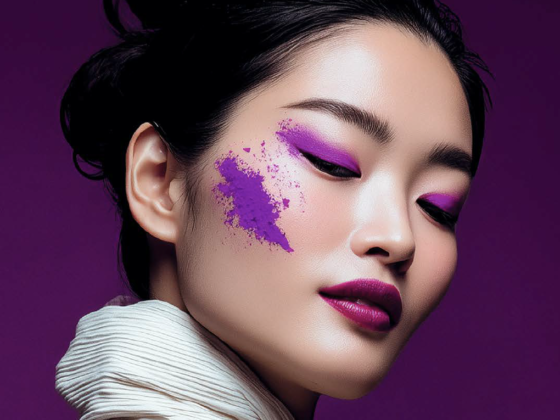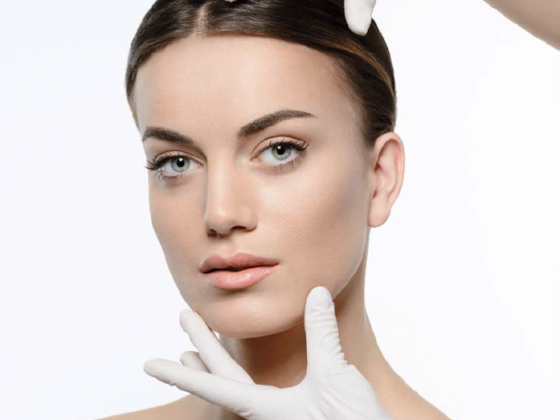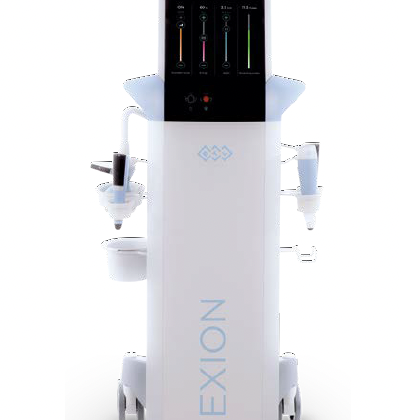An advance? An alternative? A complementary treatment?
By Dr Wided Limaiem Joumni
What is it?
Aesthetic medicine is more about injections and rejuvenation devices, whereas regenerative medicine refers to solutions that stimulate the cells and their functions: primarily the fibroblasts, which are behind collagen and elastin synthesis, and also the stem cells.
 The common regeneration techniques in aesthetic medicine PRP (Plasma) and PRF (Platelet-Rich Fibrin)
The common regeneration techniques in aesthetic medicine PRP (Plasma) and PRF (Platelet-Rich Fibrin)
This is a concentration of blood plasma obtained from centrifuged autologous blood (the patient’s own blood) which is rich in platelets and growth factors (essential for cell stimulation and function, and involved in repairing and healing) as well as other biomolecules that possess anti-inflammatory and antal-gic properties. PRP injections effi ciently combat the signs of aging and promote healing. This aesthetic medicine technique gives a boost of radiance and reduces scars and wrinkles. PRP is also used to treat alopecia by reducing hair loss, fortifying the hairs and stimulating the “dormant” bulbs. It is worth remembering that PRP should only be used for certain medical indications, and it is banned from being used for aesthetic purposes in France.
Stem cells
These are undifferentiated cells that are capable of renewing themselves, indefinitely multiplying and transforming into specialised cells. These stem cells are naturally present in embryos and in certain adult organs or tissues.
In aesthetic medicine, we use:
- Unipotent stem cells: Coming from adult tissues, these can only generate one type of cell.
- Induced pluripotent stem cells (iPS) are adult stem cells that have been genetically reprogrammed to have the same characteristics as embryonic stem cells. The technique was developed in Japan in 2006 by the researcher Shinya Yamanaka (Nobel Prize for Medicine in 2012). Cutaneous stem cells have been used since the 1980s to rebuild the epidermis in severe burns victims. In aesthetic medicine, this technique is used to treat scars, burns and some types of alopecia
- Growth factors. These substances are naturally present in the cells. They are capable of stimulating the growth, multiplication, proliferation and differentiation of the cells. They sometimes play the role of intercellular mediators. In aesthetic medicine, growth factors are used to treat certain types of alopecia, healing, skin rejuvenation, photo-aging and hyperpigmentation.
- Polynucleotides (PDRN). These are polymers of deoxyribonucleic acid, which is a fraction of DNA. They have a mixed effect on the fibroblasts: they regenerate the existing fibroblasts and stimulate cell proliferation. This increases collagen I and III, which makes the skin f firmer, more elastic, better hydrated and therefore younger-looking. PDRN also has an antioxidant and restructuring effect on the skin barrier. It can be used on its own or combined with other aesthetic treatments. The specific feature of this treatment is that it creates no volume, which makes it suitable for thinner areas such as the lower eyelids, upper lip, décolletage and hands.
- Exosomes. These are 30 to 90nm blisters that are released by cells into their environment. They were described for the first time in 1983. They contain lipids, proteins, growth factors, microRNA and nucleic acid, and act as vehicles for transporting and expelling cellular components. What is more, they are involved in cellular communication and can, for example, play a role in cell immunity. In aesthetic medicine, they are used to strengthen the skin barrier and improve hydration, as well as acting upon hyperpigmentation and elasticity. They are also used to stimulate hair growth and fortify the hairs.
 Is regenerative medicine an alternative or complement for all of the other usual techniques?
Is regenerative medicine an alternative or complement for all of the other usual techniques?
Aesthetic medicine is still a rapidly-developing field that is constantly evolving, and although “trends” can affect the patients’ requests, this discipline is based on true medical analysis and scientific and ethical stringency. Hyaluronic acid and devices are no longer the only solutions to stimulate and repair the skin and appendages. Nowadays, several techniques act directly upon cellular aging and many requests also lead us to an “etiological” skin treatment, to maintain a natural yet subtly beautified appearance, which means that all of these techniques are complementary and can be combined to offer the most suitable and personalised treatment.
 Dr Wided Limaiem Joumni: Morphological and anti-aging medicine, Paris XV Works in the hospital A&E department. Graduated from Paris V, VI, VII and UEM (Madrid) universities
Dr Wided Limaiem Joumni: Morphological and anti-aging medicine, Paris XV Works in the hospital A&E department. Graduated from Paris V, VI, VII and UEM (Madrid) universities
More informations: dr-limaiem-esthetique.fr















